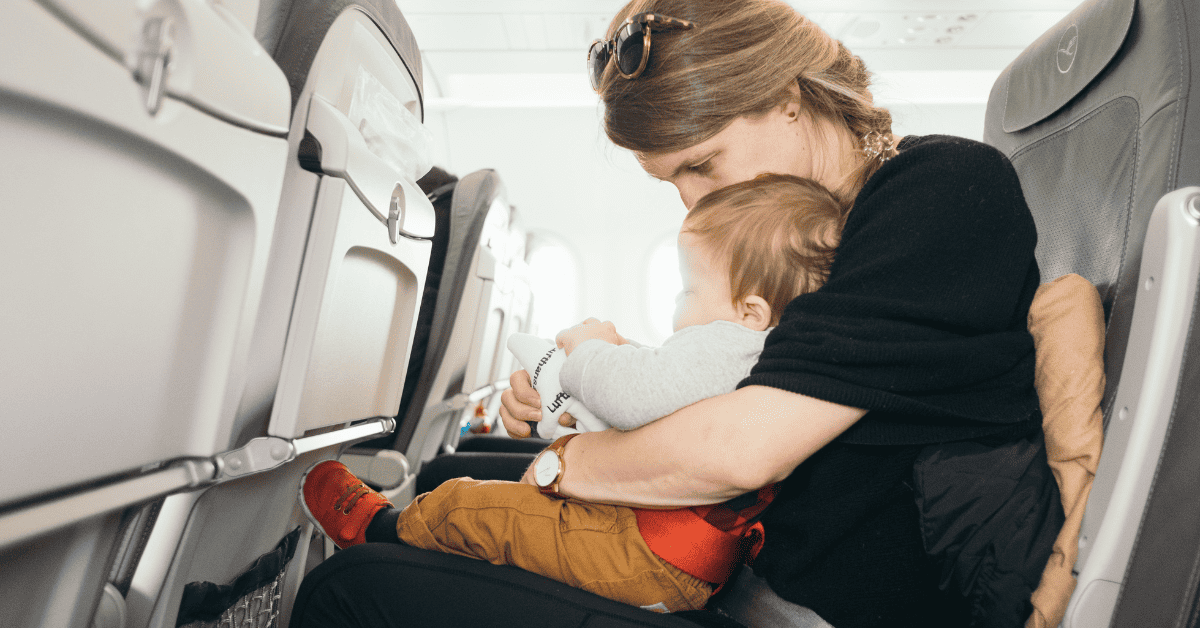Estimated reading time: 9 minutes
Discover expert tips and tricks on how to survive a long flight comfortably. Don’t let that flight get you down—master the art of survival with this guide.

Learning how to survive a long flight requires careful planning, preparation, and a few tried-and-true techniques. With air travel opening up a world of possibilities, the only downside is enduring the extended periods of sitting on a plane. But fear not! Our expert-curated guide is here to help you conquer those long-haul journeys with ease. Explore our top tips for surviving and thriving during your next epic adventure in the skies.
Tried-and-Tested Personal Tips on How to Survive a Long Flight
- Start the Flight Rested
Ensuring you arrive at the boarding gate well-rested may seem like common sense, but it’s a crucial aspect that often gets overlooked. Many of us find ourselves fatigued upon reaching the airport due to late-night work or last-minute packing. Balancing family time and pre-flight preparations can also leave us feeling exhausted even before the long air journey begins. However, making rest a priority before your flight can make a significant difference in your overall experience. By getting sufficient rest, you’ll be able to arrive at the airport early, allowing ample time for check-in and security procedures without unnecessary stress. This way, you can board the plane with a calm and relaxed mindset, setting a positive tone for the rest of your journey.
- Don’t Leave Without Packing These Must-Have Flight Items

Packing for a long flight is essential to ensure your comfort and entertainment throughout the journey. In addition to the basics like wet wipes and tissues, consider including a few items in your carry-on bag that can make a significant difference. First and foremost, pack your favorite travel pillow to provide neck and head support, allowing you to relax and potentially get some rest. For a top-notch option, consider the Cabeau Evolution Classic Travel Pillow, known for its exceptional comfort and ergonomic design.
When it comes to establishing a serene environment during your travels, earplugs and an eye mask prove to be invaluable, particularly for individuals who are sensitive to light or noise disruptions. EarPlanes can be an excellent choice for earplugs. Specifically designed to alleviate the effects of pressure changes, these earplugs provide relief and ensure a more comfortable travel experience for both children and adults alike.
Don’t forget to bring a cozy blanket, as airplanes can sometimes get chilly. To keep yourself entertained, pack a book or e-reader, ensuring you have engaging content to enjoy during the flight. Finally, don’t overlook the importance of a charging cable to keep your electronic devices powered up throughout the flight.
- Bring Snacks and Water
While airlines typically offer food and beverages, it’s wise to bring your own snacks to supplement your nourishment and satisfy your preferences. Bring healthy options like cereal bars, unsalted nuts and dried fruit, which provide essential nutrients and energy. Additionally, having a large bottle of water on hand is essential to combat the dehydrating effects of the recirculating air in the cabin. Staying properly hydrated throughout the flight can help prevent fatigue, dryness, and discomfort.
- Wear Loose, Comfortable Outfits
When it comes to clothing for long flights, comfort is key. Opt for loose-fitting and breathable fabrics that allow for easy movement. Dressing in layers is wise, as it enables you to adjust your clothing to fluctuating cabin temperatures. Don’t forget to wear comfortable shoes that can accommodate potential foot swelling during the flight. Additionally, consider wearing compression socks to promote healthy blood circulation and reduce the risk of deep vein thrombosis (DVT).
How to Survive a Long Flight with Children
- Maintain a Calm Atmosphere

Long flights with children are an adventure filled with unique challenges and memorable moments. When it comes to the emotional well-being of your child during travel, your own state of mind plays a significant role. If you’re feeling tense or stressed, it can easily transfer to your child, making them feel the same way. It’s important to remain calm and composed, creating a soothing atmosphere for both yourself and your child. Remember, it’s natural for children to cry during flights as it helps equalize the pressure in their ears. This crying is a normal process and should not cause undue worry. To provide additional comfort, consider bringing your child’s favorite toys and blankets on the aircraft. These familiar items can help alleviate anxiety by making the unfamiliar airplane environment feel more familiar and reassuring.
- Pick Your Seats in Advance
Selecting your seats ahead of time is crucial when traveling on long-haul flights, especially with children. Take into account various factors such as proximity to restrooms and the galley, suitable seat configuration for your family size, as well as the options of bulkhead, extended legroom, or regular legroom seats. To ensure the safety of your young children, we highly recommend investing in the CARES harness. This FAA-approved belt provides a secure 4-point harness system, offering far greater safety than a lap belt alone. If your baby is accustomed to sleeping in their car seat and finds comfort in it, consider bringing it onboard the plane for their convenience.
- Make Travel Comfortable for Kids

Enhance your child’s comfort during long flights by considering the inclusion of an inflatable foot pillow in your travel preparations. This practical accessory allows your little one to extend their legs or even recline in a flat position, ensuring a more relaxed and enjoyable journey. It is worth noting, however, that policies regarding the use of inflatable foot pillows may vary among airlines. Therefore, it is crucial to check your specific airline’s guidelines to ensure compliance before bringing one on board.
- Be Prepared for Emergency
It’s essential to always include a set of pajamas or soft clothing in your children’s travel essentials. These comfortable garments provide them with the opportunity to change into something cozy and familiar during the journey. Additionally, it is highly recommended for parents to carry wet bags as part of their travel gear. These convenient bags serve as a practical solution in case of diaper blowouts or accidents during travel, keeping wet or soiled items separate and contained.
General Tips for Long Flights
- Ask About an Upgrade
When it comes to upgrading your seat for a more comfortable journey, there are several options to consider. One option is to upgrade to an economy plus seat, which offers a standard seat with better legroom. Alternatively, you can aim for the luxury of business class, where you’ll enjoy a significantly larger seat and added amenities.

If you have accumulated air miles, using them to upgrade can be a smart choice. Picture yourself reclining in a first-class seat, grateful for the upgrade. However, it’s important to note that for flights under 10 hours, an upgrade may not be worth it in terms of cost and benefits. On the other hand, for flights exceeding 12 hours, upgrading becomes more appealing. For instance, cross-country flights within the US often do not justify the use of upgrade points unless you have an abundance to spare.
Timing is key when requesting an upgrade. The best opportunity arises during the check-in process at the airport. Generally, prices are lower at the check-in counter, and in some cases, you might even secure a free upgrade, especially if the airline is aware of an oversold section or if there are vacant seats in the next cabin class. Arriving early for check-in increases your chances of success in securing an upgrade.
- Say No to Alcohol on the Plane
While indulging in a cocktail or two may appear tempting, particularly when traveling for leisure, it’s important to consider the potential drawbacks. As per studies, the pressurized environment inside an airplane can amplify the effects of alcohol on the body, making it more potent and potentially leading to increased discomfort. Furthermore, it’s not just alcohol that can pose challenges during your journey. Beverages like coffee, soft drinks, and even consuming chocolate can act as diuretics, contributing to dehydration. Maintaining proper hydration is crucial during a long flight, as the recycled air can have a drying effect on the body. Therefore, it is advisable to be mindful of your beverage choices and prioritize water intake to stay adequately hydrated throughout the journey.
- Walk Around the Plane Periodically
Engaging in leg stretching exercises during a long-haul flight is not only essential for maintaining your sanity but also for preventing DVT. To keep the blood circulation in your legs flowing, try performing gentle exercises while seated and make it a point to get up and move every two hours. While there may not be a specific designated walking area besides the aisles, periodically moving around the plane is far more conducive to obtaining restful sleep than relying on sleeping pills.
How to Pick the Best Seat for Your Long Flight
Selecting the right seat on an aircraft is more than just a matter of preference; it can significantly impact your comfort and overall flight experience. For those concerned about turbulence, choosing a seat near the front of the plane is advisable. Surprisingly, while passengers at the front may feel minimal movement, those seated towards the back may experience more turbulence due to the aircraft’s varying dynamics.

If you’re tall and desire extra legroom, considering the emergency exit row is worthwhile. However, keep in mind that these seats require you to stow your bags elsewhere to ensure unobstructed evacuation paths. Some airlines may also charge an additional fee for seats with extra legroom, so it’s essential to factor in any potential costs.
On long-haul flights, opting for a window seat can be a smart choice. This allows you to lean against the bulkhead and rest your head, making it easier to sleep compared to aisle or middle seats. While the middle seat is generally less desirable, it becomes particularly unappealing during long flights when comfort and ease of movement are paramount. Investing extra for an aisle or window seat, especially if you plan to sleep during the flight, can be well worth it.
Additionally, if you prefer to have mobility or quick access to restrooms, securing an aisle seat is recommended. This allows you to move around the plane with ease and avoid inconveniencing fellow passengers when needing to use the facilities.
In the event that you don’t have a preferred seat or the seats with ample legroom are already taken, consider selecting a seat towards the back of the plane. Although it may be slightly noisier, many passengers tend to rush for the front seats, increasing the likelihood of finding empty seats beside you towards the rear. Prior to your flight, keep an eye on the seat map to identify any vacant rows that you can potentially claim at the last minute.
The Last Leg of Mastering a Long Flight
Now that you are equipped with the knowledge on how to survive a long flight and have managed to do so successfully, the last thing you want is to find yourself aimlessly wandering around in search of transportation to reach your final destination. By pre-booking a reliable Blacklane airport transfer, you can rest assured that a dedicated chauffeur will be ready and waiting for you as soon as you step out of the baggage claim area. Additionally, why not take advantage of the convenience offered by an airport concierge service? This valuable service not only assists with fast-tracking immigration and customs but also provides much-needed baggage assistance, ensuring you can effortlessly navigate the airport.



